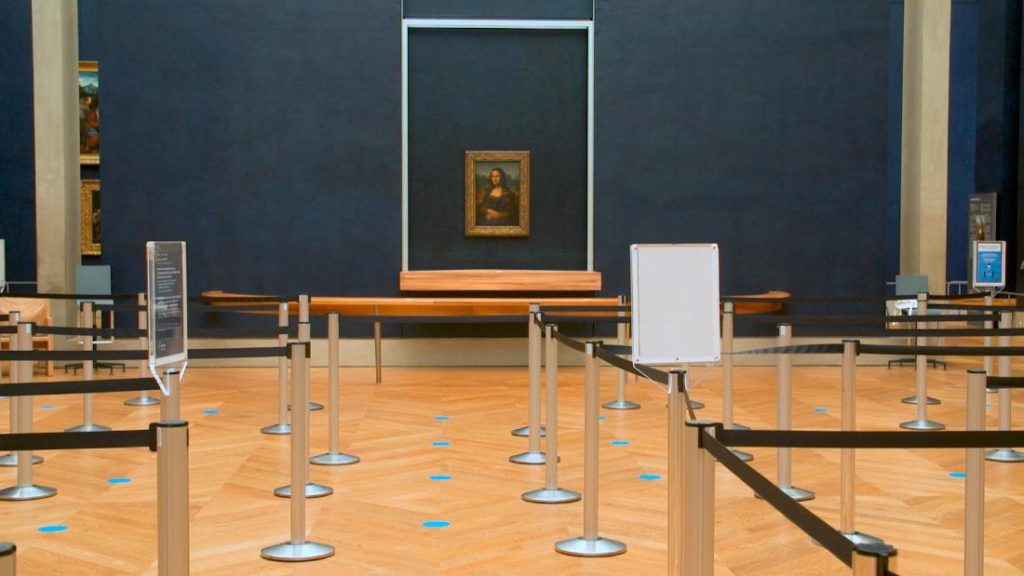But they’re not completely alone — the museum is making the most of the closures by carrying out long-planned renovations.
“(The Louvre) is still living, even though it seems really asleep from the outside,” says project manager Gautier Moysset, standing in front of a set of 19th-century doors that once opened onto the bedchamber of French kings.
Behind him, Gaëlle Dulac is carefully bringing the doors back to life, switching between paintbrushes made from hog bristle and badger hair as she recreates the grain of the wood with layers of paint.

The “Mona Lisa” alone in the Louvre without visitors.
The curator says the quiet period has helped him reconsider how the Louvre displays its vast collection.
“All of a sudden a painting seems too big (or) too small, or the frame doesn’t fit with the ones nearby,” he explains. “You have to listen to what the works have to say. Sometimes they don’t like each other and you have to separate them.”
Curator Julien Cuny is also using the opportunity to reflect on the Persian collections he oversees.
“There needs to be a coherence in the museum. What is the work doing here? How is it speaking to the other works?” he says, guiding a forklift carrying a 400-kilogram (882-pound) stele through a passageway lined with Roman marble sculptures.
“It’s sad because from a logistical point of view, we can do a lot,” Cuny says. “But the artworks, they were made to be seen.”
You may also like
-
Afghanistan: Civilian casualties hit record high amid US withdrawal, UN says
-
How Taiwan is trying to defend against a cyber ‘World War III’
-
Pandemic travel news this week: Quarantine escapes and airplane disguises
-
Why would anyone trust Brexit Britain again?
-
Black fungus: A second crisis is killing survivors of India’s worst Covid wave

